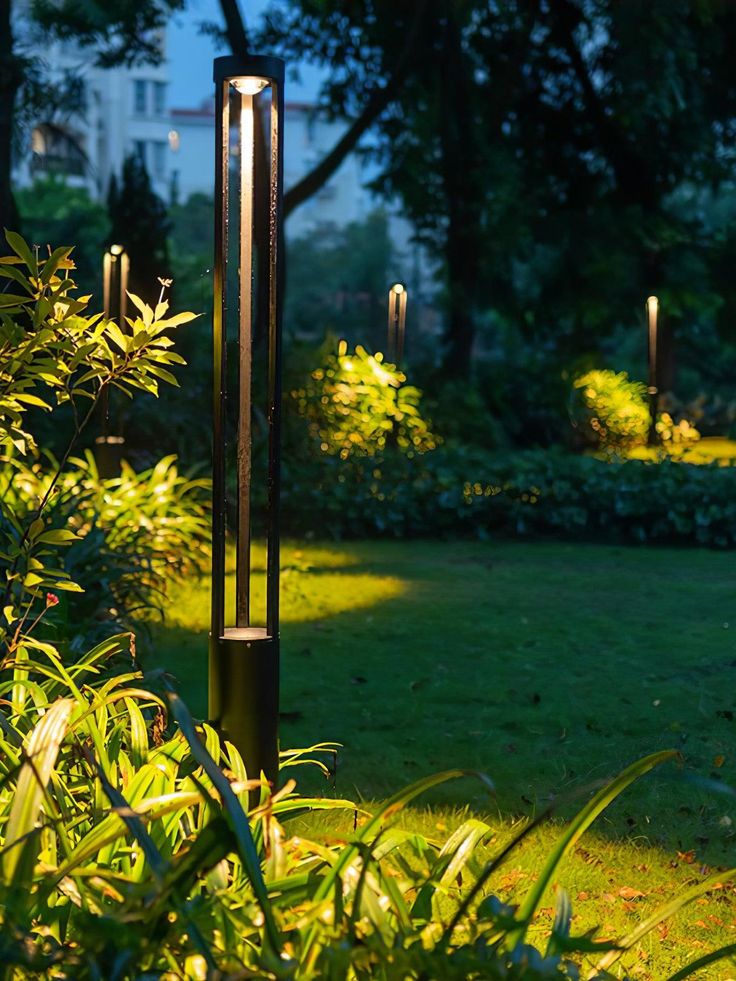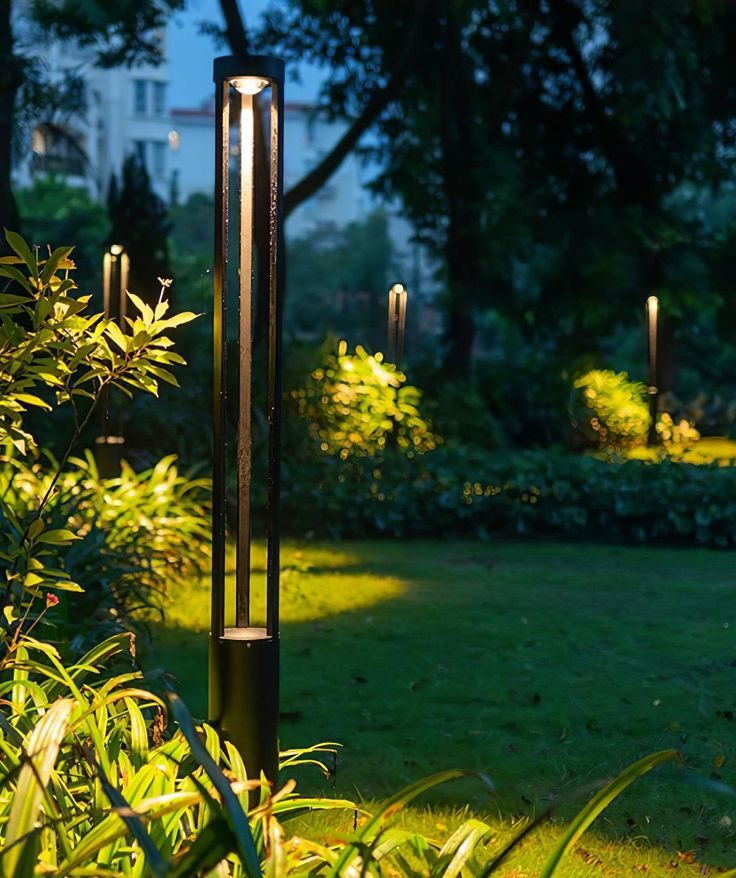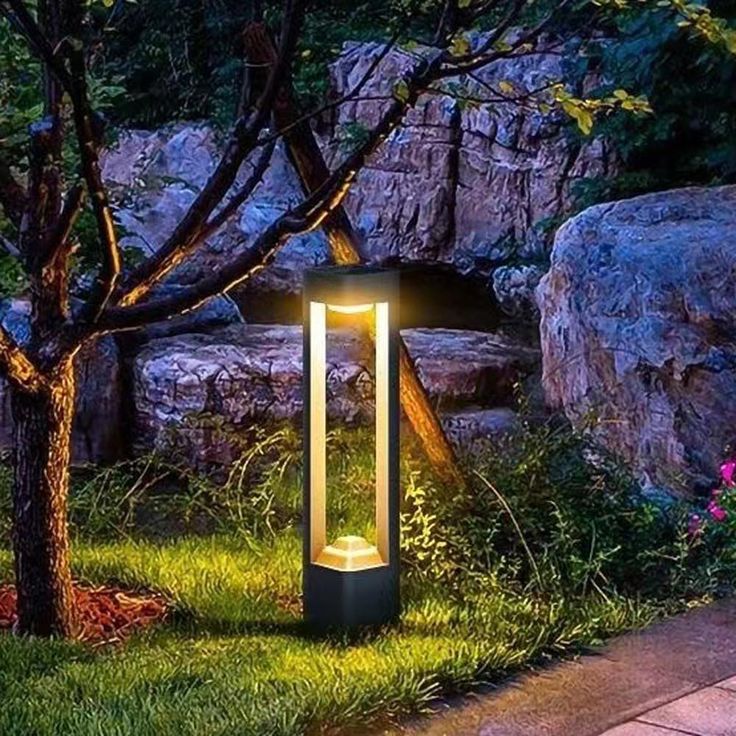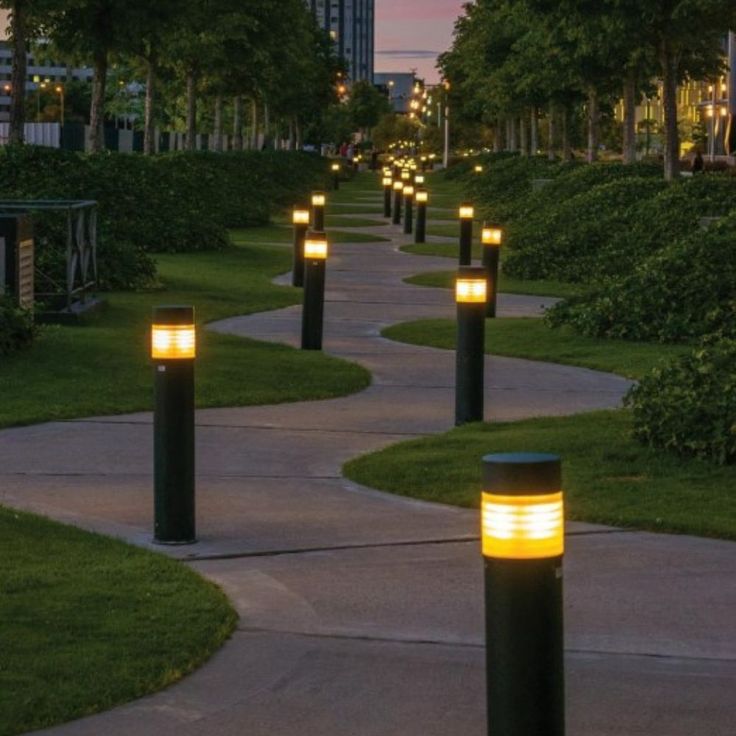Park lighting design is one of the crucial aspects of creating a safe, attractive, and user-friendly environment. Proper lighting in parks is not only essential for ensuring sufficient visibility at night and providing security for visitors, but it can also enhance the visual appeal of the space and improve the user experience. Park lighting design should illuminate pathways, specific points, and natural landscapes while creating a sense of comfort and relaxation for visitors. Additionally, the use of smart and energy-efficient lighting in parks can optimize energy consumption and reduce costs. Combining natural light during the day with artificial lighting at night, along with the correct selection of lamp types and equipment, ensures that parks remain safe and pleasant spaces at night, just as they are during the day.

The Importance of Park Lighting
1. Safety and Security
One of the primary objectives of park lighting is to create a safe environment for visitors. At night, adequate lighting can prevent unwanted incidents such as falls, collisions, or even crimes. Proper lighting illuminates walking paths, entrances, play areas, and other sections, ensuring there are no dark spots that might pose security risks.
2. Visual Appeal and Aesthetics
Lighting in parks enhances their beauty and visual appeal, creating a distinctive charm. Creative and intelligent lighting design can transform parks into inviting and pleasant places at night. This encourages people to spend more time outdoors, turning parks into spots for evening relaxation and entertainment.
3. Enhancing Visitor Experience
Proper lighting improves the overall experience for park visitors. In well-lit environments, people feel more comfortable and confident, particularly when visiting parks at night for walking, exercising, or leisure. Suitable lighting in recreational and sports areas—like play zones, cycling tracks, or running paths—ensures a safer and more enjoyable experience.
4. Extending Usability
Adequate park lighting extends the usability of spaces into the night. Good lighting design allows individuals to use parks after dark, promoting longer and more frequent visits. This is especially valuable for spaces used for activities like exercising, walking, or group workouts, where proper lighting enables ongoing activities without concerns about darkness.
5. Supporting Park Management and Maintenance
Effective lighting design aids in better park management and maintenance. It highlights vulnerable or maintenance-requiring areas, allowing park managers to address them more easily. Furthermore, smart and automated lighting systems reduce energy consumption and cut maintenance costs.
6. Sustainability and Energy Efficiency
Utilizing modern technologies such as LED lamps and smart lighting systems optimizes energy consumption in parks. Smart systems adjust light intensity based on human presence or environmental conditions, minimizing energy wastage and reducing costs.

Principles of Park Lighting Design
1. Energy Optimization
- Park lighting designs should incorporate efficient and low-energy systems to reduce energy costs. The use of LED lamps and smart systems enhances energy savings. Methods:
- Employ LED lamps as primary lighting sources.
- Install automated lighting systems that adjust intensity based on time or occupancy.
- Use solar panels to power lamps in open spaces.
2. Maintaining Harmony with Nature
- Lighting should blend with the natural environment and avoid disturbing ecosystems. Harsh and intense lights can negatively affect wildlife and plants. Methods:
- Avoid bright lighting; opt for softer, gentler illumination.
- Use low-intensity lamps with minimal heat to protect plants and animals.
- Position lights at appropriate angles to prevent direct light beams onto the ground.
3. Variety in Lighting Design
- Introducing diversity in light intensity and color helps create engaging and dynamic park environments, catering to areas like children’s play zones, pathways, and sports facilities. Methods:
- Integrate adjustable or colorful lighting for spaces requiring special ambiance.
- Highlight features such as fountains, play areas, or sports zones with well-placed lights.
- Use linear or spotlights in pathways and entrances to enhance navigation and aesthetics.
4. Visitor Comfort and Ergonomics
- Proper lighting enhances visitor comfort, particularly in relaxation areas, benches, or recreational spaces. Methods:
- Use soft, uniform lighting around seating and rest areas.
- Install pole-mounted lamps of appropriate height to provide gentle illumination without glare.
- Ensure lighting designs prioritize user comfort while preserving nighttime visibility.

Park Lighting Methods
Park lighting plays a significant role in enhancing visual appeal, safety, and functionality. By selecting the right lighting methods, parks can be transformed into delightful and attractive spaces that are accessible even at night. Below are some commonly used park lighting methods:
1. Pathway and Walkway Lighting
- Linear Lighting: Using linear fixtures or LED strips along paths to improve direction and safety.
- Recessed Lighting: Installing embedded lights in the ground or walls to provide sufficient illumination while adding visual charm.
- Standing Lights: Placing pole lights at intervals to create uniform lighting and enhance the sense of security.
2. Green Spaces and Tree Lighting
- Tree Canopy Lighting: Employing projectors to shine light onto tree canopies for a beautiful and dreamy effect.
- Tree Trunk Lighting: Highlighting tree trunks using white or colored lights for a unique appearance.
- Grass and Shrub Lighting: Utilizing hidden or low-intensity lights to illuminate greenery, creating a peaceful and pleasant atmosphere.
3. Fountain and Pond Lighting
- Underwater Lighting: Installing underwater lights in fountains or ponds to create stunning and captivating water visuals.
- Waterfall Lighting: Using colorful lights to bring dynamic and lively effects to waterfalls.
- Surrounding Lighting: Enhancing fountains by adding hidden or colored lights around them for a romantic and appealing vibe.
4. Urban Furniture Lighting
- Bench Lighting: Adding lights under or behind benches to create a cozy and inviting setting.
- Trash Can Lighting: Illuminating trash cans to improve visibility and convenience at night.
Each method contributes uniquely to the charm and practicality of a park, ensuring visitors enjoy an enchanting and safe experience.

Suitable Park Lighting Equipment
For illuminating parks, selecting the right equipment not only enhances the beauty and appeal of the space but also boosts safety, efficiency, and energy savings. A variety of equipment can be used to fulfill specific roles in lighting and improving the visitor experience. Below are some suitable options:
- Street Lights
- Typically used for lighting main paths and large open areas in parks.
- Features:
- Installed on tall poles or towers.
- Use of LED bulbs for energy efficiency.
- Designed to resist weather conditions like wind and rain.
- Pole Lights
- Ideal for illuminating walking paths, parking lots, and specific park areas.
- Features:
- Suitable for wide spaces.
- Provides soft, uniform lighting.
- Adjustable light angle.
- Wall Lights
- Used to brighten walls, entrances, and specific park zones like rest areas.
- Features:
- Sleek and practical design.
- Creates soft, indirect lighting.
- Fits well on walls and fences.
- Hanging Lights
- Designed for lighting pathways, bridges, and other park zones.
- Features:
- Suitable for shelters or indoor spaces.
- Offers soft and inviting illumination.
- Enhances aesthetic appeal at night.
- Motion Sensor Lights
- Provides automatic lighting for less-trafficked areas or specific spots.
- Features:
- Prevents energy waste.
- Suitable for paths or quiet zones.
- Activates automatically when motion is detected.
- Accent Lights
- Highlights specific features like trees, sculptures, fountains, and other attractions.
- Features:
- Focused and angled light output.
- Enhances visual appeal.
- Ideal for illuminating artistic or architectural elements.
- Solar Lights
- Perfect for outdoor park areas without grid electricity. Powered by renewable energy.
- Features:
- Uses clean and sustainable energy.
- Simple installation with minimal maintenance.
- Best for remote or low-traffic zones.
- Linear Lights
- Modern designs suitable for pathways, gardens, and different park zones.
- Features:
- Can be installed along paths or curbs.
- Attractive and user-friendly design.
- Provides uniform, indirect lighting.
- Park Lights
- Specifically designed for rest areas, benches, and gathering points in parks.
- Features:
- Mounted on shorter poles.
- Delivers soft and indirect lighting.
- Complements the greenery of the park.
- Border Lights
- Used to illuminate edges and boundaries, enhancing the surroundings of flowerbeds, curbs, and pathways.
- Features:
- Installed along borders or edges.
- Soft and indirect lighting output.
- Creates attractive effects alongside plants or paths.

 English
English العربية
العربية

















